Chengdu Research Base of Giant Panda Breeding

What is the Chengdu Research Base of Giant Panda Breeding?
The Chengdu Research Base of Giant Panda Breeding houses over 150 native Chinese Giant Pandas in a remarkable sanctuary. Sichuan’s Chengdu is one of the finest places to witness pandas outside of zoos, with only about 1800 remaining in the wild. The Chinese cherish these black and white bears, evident from the numerous statues and toys found throughout Chengdu. Having visited twice, I’ve witnessed the exceptional love and care given to these gentle creatures. This blog post provides a park overview and useful visit tips.
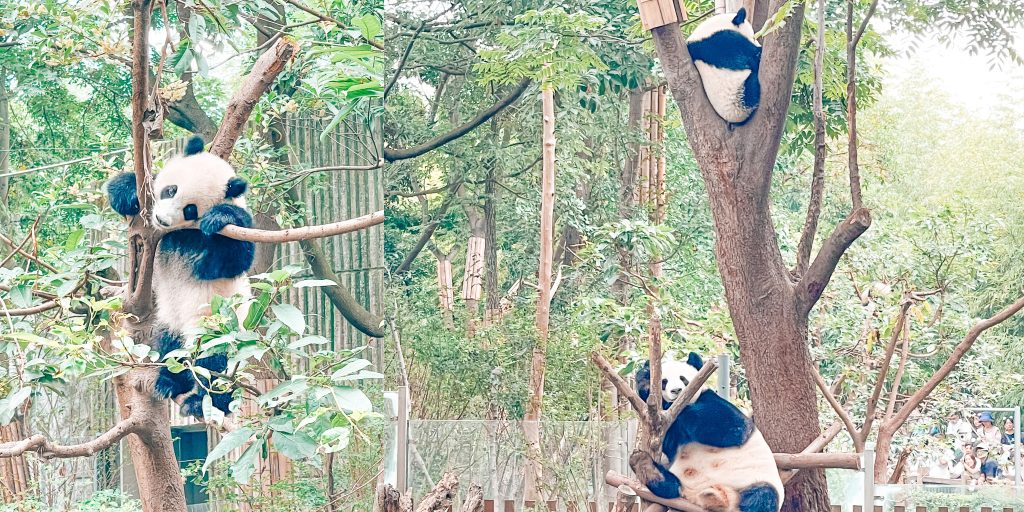
Why You Should Visit the Research Base
The number one reason why you should visit is because of the sanctuary’s care and dedication. Its goal to increase the Giant Panda population is admirable and these animals are treated with the best care that I’ve seen in China. As it is a research center, scientists are constantly adapting to improve their breeding and conservation efforts. The areas in which the pandas are kept are large and spacious. There aren’t any glass walls between visitors and pandas. It is very open, and it feels like you are part of their natural habitat. If you ever have the opportunity to visit Chengdu, I highly recommend making a stop at the Chengdu Research Base of Giant Panda Breeding.
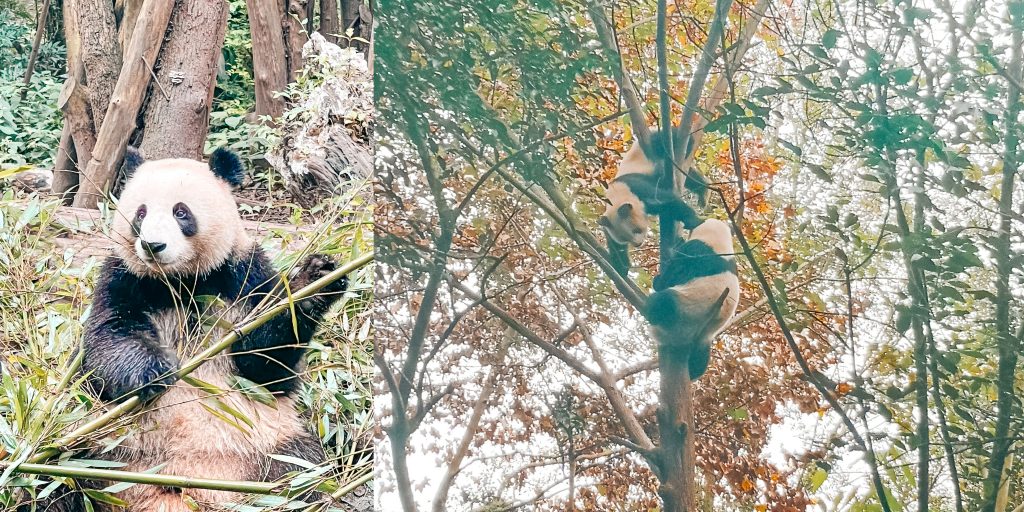
Best Time of Year to Visit
After visiting the Chengdu Research Base of Giant Panda Breeding twice. I have some advice for those who want to visit without a tour guide. Firstly, arrive at least 30-40 minutes before the 8:00 AM opening time to avoid the crowds. The place is incredibly popular, and you don’t want to arrive when it’s swarming with people. Pandas are also slow-moving and lazy animals that sleep a lot. Therefore, arriving early will increase your chances of seeing them and witnessing their morning feed of bamboo. When I visited early, my friend and I were the only ones watching the pandas eat bamboo. We got great photos and enjoyed some quiet time with them. Make sure to set your alarm and get to the center early to have the best experience!
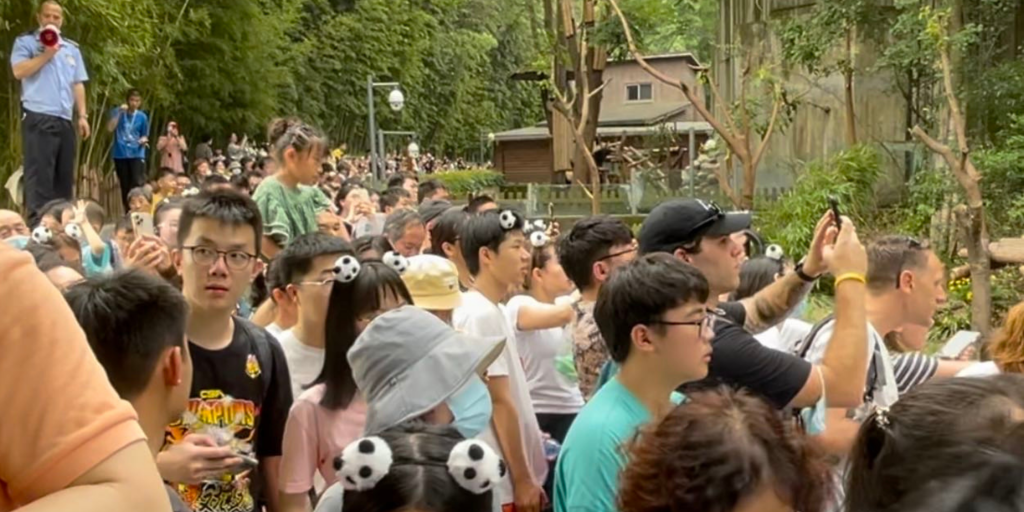
When Can I see Baby Pandas?
If you want to see baby pandas, plan your visit between August and December, as this is when they are born and most active. I visited during November, and it was an amazing experience, but also a very popular one! The walkway in the section where the babies are kept can get incredibly crowded, as you can see in the photo above. However, if you can’t visit during these months, you can still see young pandas. During my second visit in July, the pandas were still young and cute. They were even more active and cheekier, playing with each other and pushing each other out of trees. So, any time is still great and you won’t be disappointed!
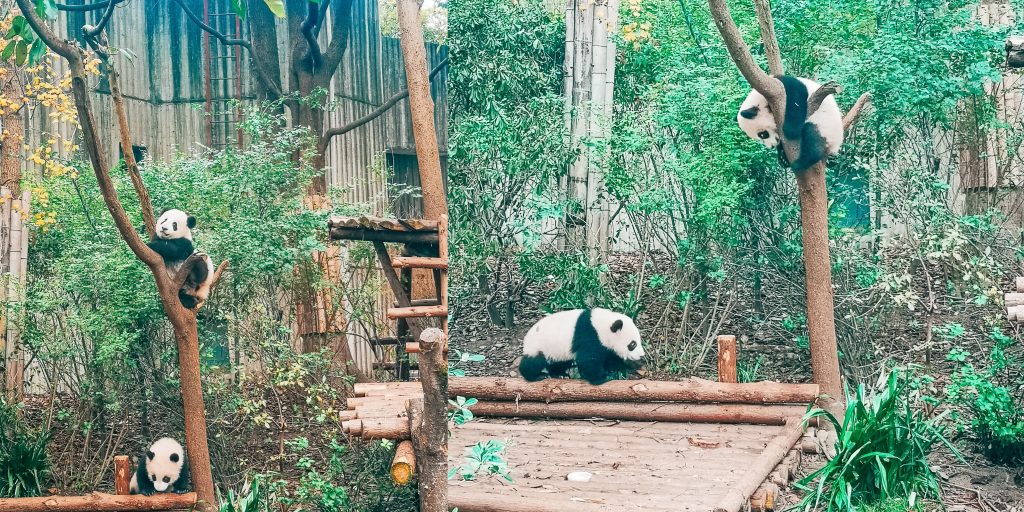
Panda Museum and Research
The panda museum within the park is a great addition to learning more about the park’s mission and providing knowledge about these rare animals. It teaches you the history and importance of giant pandas in Chinese culture, as well as the scientific research and conservation efforts taking place at the center.
There are many displays and exhibits all in Chinese and English, including facts on the panda’s biology, behavior, habitats, and threats it faces in the wild. The most interesting part I found was the breeding program about how they ensure the population grows. Overall, the museum is a real insight into the background of Giant Pandas and is worth your time when visiting the base.
The Panda Post Office
The research base has an incredible attraction that’s bound to catch your attention: the Panda Post Office. What sets it apart is that you can purchase postcards and send them anywhere in the world with an exclusive panda-themed stamp. Even if you don’t speak Chinese, don’t worry because signs in English will guide you on how to send your postcard internationally. It’s an exceptional souvenir that’s definitely worth trying, but be prepared to step out of your comfort zone! I was able to send a postcard back to my family in England, and although I still haven’t seen it due to the pandemic, I know it’ll be a remarkable memory once I get my hands on it.
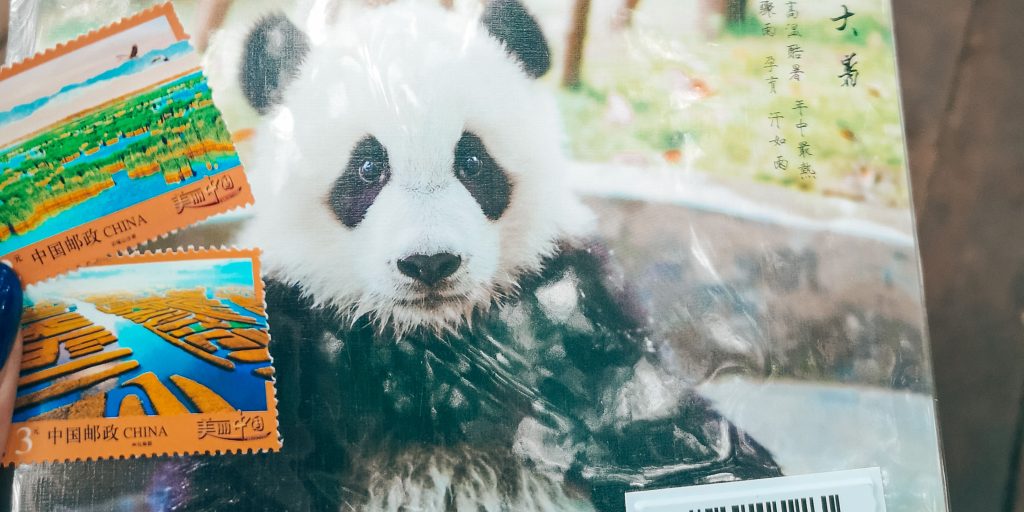
Panda Coffee Shops and Restaurants
Don’t forget to visit the Panda Cafe when you feel hungry or thirsty during your park visit. It’s a popular cafe decorated with cute panda toys, offering a variety of panda-themed treats such as cookies, cakes, and ice creams. You can even enjoy a cup of coffee or tea with a panda image printed on the foam! The cafe is similar to Disneyland for panda lovers, and the park has been designed to make your visit thoroughly enjoyable.
In addition to the Panda Cafe, there are other dining options available in the park, including the Panda Restaurant and Panda Tea House. With these different options, visitors can find something to suit their taste and preferences. Whether you’re in the mood for a quick snack or a full meal, there’s something for everyone. And of course, the panda theme is consistent throughout the park, adding to the unique and fun atmosphere.

How to Get To the Chengdu Panda Research Base
The Chengdu Research Base of Giant Panda Breeding is not particularly close to downtown Chengdu. Therefore, I advise getting up early and taking either one of the 3 options below. I have taken the train and taxi to reach the panda base before and both were perfectly fine in getting to my destination with ease. It is good to note, that when leaving the park, there are plenty of taxis waiting outside the exit to get back to your hotel. Just make sure you have your hotel address written in Chinese to ensure getting back smoothly.
- By Metro: It takes approximately 45 minutes to 1 hour to travel from downtown Chengdu to Xiongmao Avenue Station by Metro Line 3. From there, it may take another 10-15 minutes by taxi or bus to get to the Chengdu Panda Base.
- By Bus: It takes approximately 1 hour to 1 hour and 15 minutes to travel from the city center to the Chengdu Panda Base by bus, depending on traffic conditions.
- By Taxi/Didi: It takes approximately 30-45 minutes to travel from downtown Chengdu to the Chengdu Panda Base by taxi, depending on traffic conditions.

Your Questions Answered:
How Much Does It Cost to Enter Chengdu Research Base of Giant Panda Breeding?
The admission fee for the Chengdu Research Base of Giant Panda Breeding varies depending on the season. As of my knowledge, the price ranged from 58 yuan (approximately $9 USD) to 118 yuan (approximately $18 USD) per person.
What is the Chinese name of Chengdu Research Base of Giant Panda Breeding?
The Chinese name of the Chengdu Research Base of Giant Panda Breeding is 成都大熊猫繁育研究基地
How much does it cost to hold a baby panda in Chengdu/ Can I touch a Panda?
To the best of my knowledge and research, holding pandas has been suspended, and touching them is not permitted. However, you can still see them up close in their natural habitat, which is great. In the past, holding a panda cost almost $300. Nonetheless, I believe it’s unnecessary to hold them as they are wild animals and should be kept that way.
Why is Chengdu famous for pandas?
Chengdu is famous for pandas because it is the capital city of Sichuan Province, which is the natural habitat of the giant panda. Chengdu is also home to several panda breeding and research facilities, including the Chengdu Research Base of Giant Panda Breeding. It is one of the best places to see Giant Panda’s in the world. The only other place you may see a Giant Panda is in a zoo.
Do I need a Tour Guide?
No, you do not need a tour guide to visit the research base. The signs and maps are in English and it is super easy to navigate. However, if you would like a tour guide, then I recommend a reputable company like China Highlights.
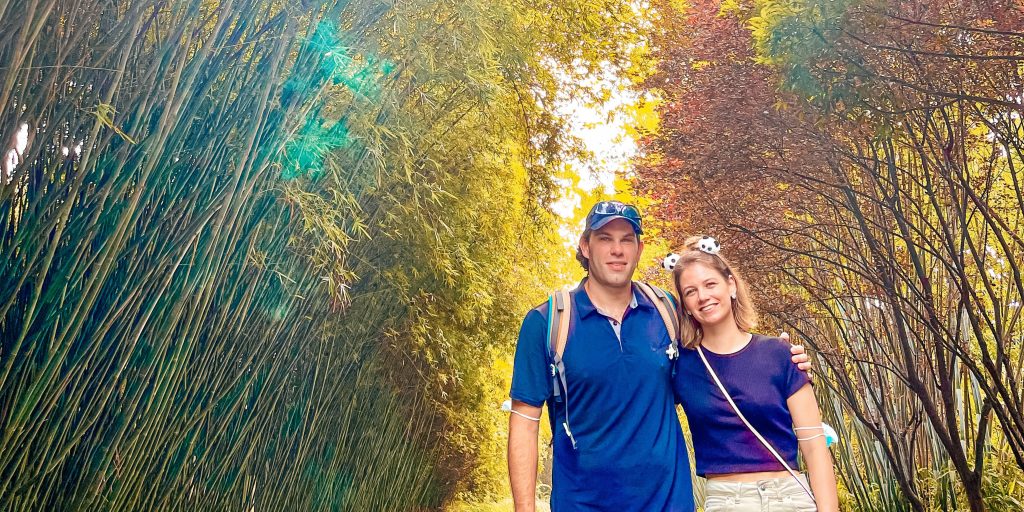
Overall, Add Chengdu Research Base of Giant Panda Breeding to Your Bucket List
The Chengdu Research Base of Giant Panda Breeding provides an exceptional opportunity to see pandas in their natural habitat. Visitors will witness the park’s admirable dedication to conserving this endangered species. Arriving early is recommended to avoid crowds and observe the pandas’ morning feed. The park also features a Panda Museum, Panda Post Office, and dining options to enhance the unique atmosphere. Don’t miss the chance to visit this must-see destination if you ever find yourself in Chengdu.
Related Posts
A Xian Itinerary
Xian Itinerary If you’re planning to visit this historical city and are wondering how much …
June 20, 2023The Hong Kong 7’s Rugby Tournament
Are you a fan of rugby? Then you’ve probably heard of the Hong Kong …
April 30, 2023


Best Places to Visit in Sichuan Province - thisbritsbucketlist.com | 18th Mar 23
[…] The Panda Breeding Sanctuary […]